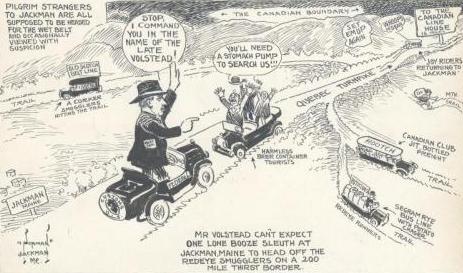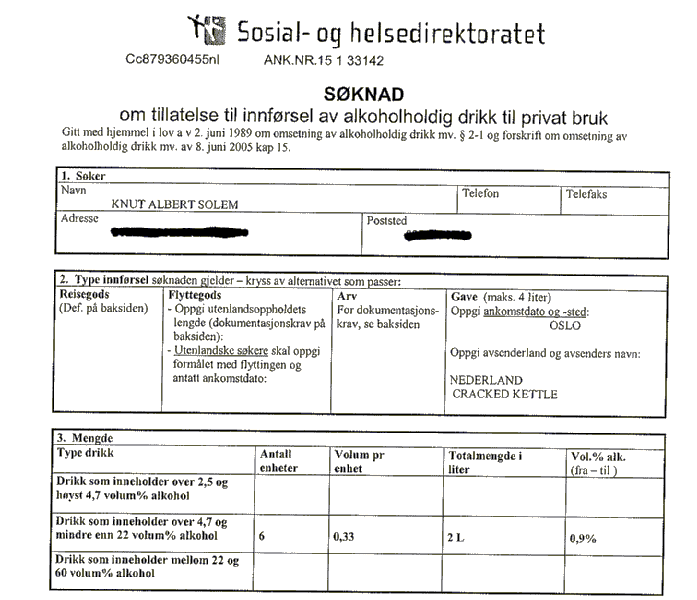 Right: Levi Veney, ex-slave who lived in Amherstburg, taken at J. D. Burkes’ store, 1898. Archives of Ontario. Click for large view.
Right: Levi Veney, ex-slave who lived in Amherstburg, taken at J. D. Burkes’ store, 1898. Archives of Ontario. Click for large view.
I am not one of those anti-MSM, “the boogiemen are just round that corner now that Democrats are here” sorts of persons that have been so tediously active in the blogosphere in the last 24 hours…but when I heard a self-congratulatory reference in a CBC radio piece suggesting Canada not having a history of race issues as had the USA, it did grate on the ears. Reminded me to switch stations. But it got me thinking…there must have been a last slave in Canada. We traded in human souls with the best of them before a certain date, before the long path to today began. Google Books to the rescue with the 1869 book History of the Settlement of Upper Canada (Ontario), with Special Reference to the Bay of Quinté by Wm. Canniff. where we read at page 574:
…when the British Act of Emancipation was passed, in 1833, setting free the slaves in all parts of the Empire, there was no slaves in Canada, Upper or Lower. Thirty years previous had the evil been crushed in Lower Canada, and forty years before Upper Canada had declared that it was “highly expedient to abolish slavery,” and had enacted laws to secure its abolition…
The story goes on to mention the slaves of of the first Loyalist familes who settled along the eastern shore of Lake Ontario and down the St. Lawrence and, at pages 576 and 577 there is this extraordinary statement:
We have before us the copy of an assignment made in 1824 by Eli Keeler, of Haldimand, Neweastle, to William Bell, of Thurlow, of a Mulatto boy, Tom, in which it is set forth, that the said boy has time unexpired to serve as the child of a female slave, namely, ten years, from the 29th Feb. 1824, according to the laws of the Province ; for the sum of $75. Probably, this was the last slave in Canada whose service closed, 1835.
It appears from that reference and a few others that a child of a slave was a slave until majority during the transitional period. So who was the last one alive? Probably not this gentleman, given Mr. Veney above, but he is worth mentioning now as Canniff did at page 577:
In the Ottawa Citizen of 1867, appeared the following: A BRITISH SLAVE — An old negro appeared at the Court of Assize yesterday, in a case of Morris vs. Hennerson. He is 101 years of age, and was formerly a slave in Upper Canada, before the abolition of slavery in the British possessions. He fought through the American war in 1812, on the side of the British; was at the battles of Chippewa and Lundy’s Lane, and was wounded at Sacket’s Harbour. He is in full possession of all his faculties. He was born in New York State in 1766, and was the slave of a TJ. B. Loyalist, who brought him to Canada. He was brought to this city to prove the death of a person in 1803, and another in 1804.
If he was wounded at the 1812 Battle of Sackets Harbor (there was another in 1813) that means he was at least in Kingston then as the British force was based here, a generation before the Martellos were built. I will have to see if that case is reported, if it actually gives his name.



 On the outskirts of Europe there lives a peculiar tribe of people. Like most other nations, they feel that they have the solution to every problem on the planet. Other small nations have had to bow to the necessity of adjusting to their surroundings, but Norway had the curse to find oil and gas in the 1970s, giving them the possibility of constructing their own reality.
On the outskirts of Europe there lives a peculiar tribe of people. Like most other nations, they feel that they have the solution to every problem on the planet. Other small nations have had to bow to the necessity of adjusting to their surroundings, but Norway had the curse to find oil and gas in the 1970s, giving them the possibility of constructing their own reality. I am greatly saddened by the whole soccer head scarf debate surrounding one girl who wants to play. Playing is good and as we learn over and over FIFA is bad. It is not a difficult or even controversial statement. It is simply so. Feel good about thinking FIFA bad. Does anyone shed a tear for the Olympic Committee or any other private unelected mens’ clubs that organize sport to rake in personal privilege and benefit? It is only right and good to lump FIFA in and, frankly, place them up at the top of the lump.
I am greatly saddened by the whole soccer head scarf debate surrounding one girl who wants to play. Playing is good and as we learn over and over FIFA is bad. It is not a difficult or even controversial statement. It is simply so. Feel good about thinking FIFA bad. Does anyone shed a tear for the Olympic Committee or any other private unelected mens’ clubs that organize sport to rake in personal privilege and benefit? It is only right and good to lump FIFA in and, frankly, place them up at the top of the lump. Big news from a little place
Big news from a little place